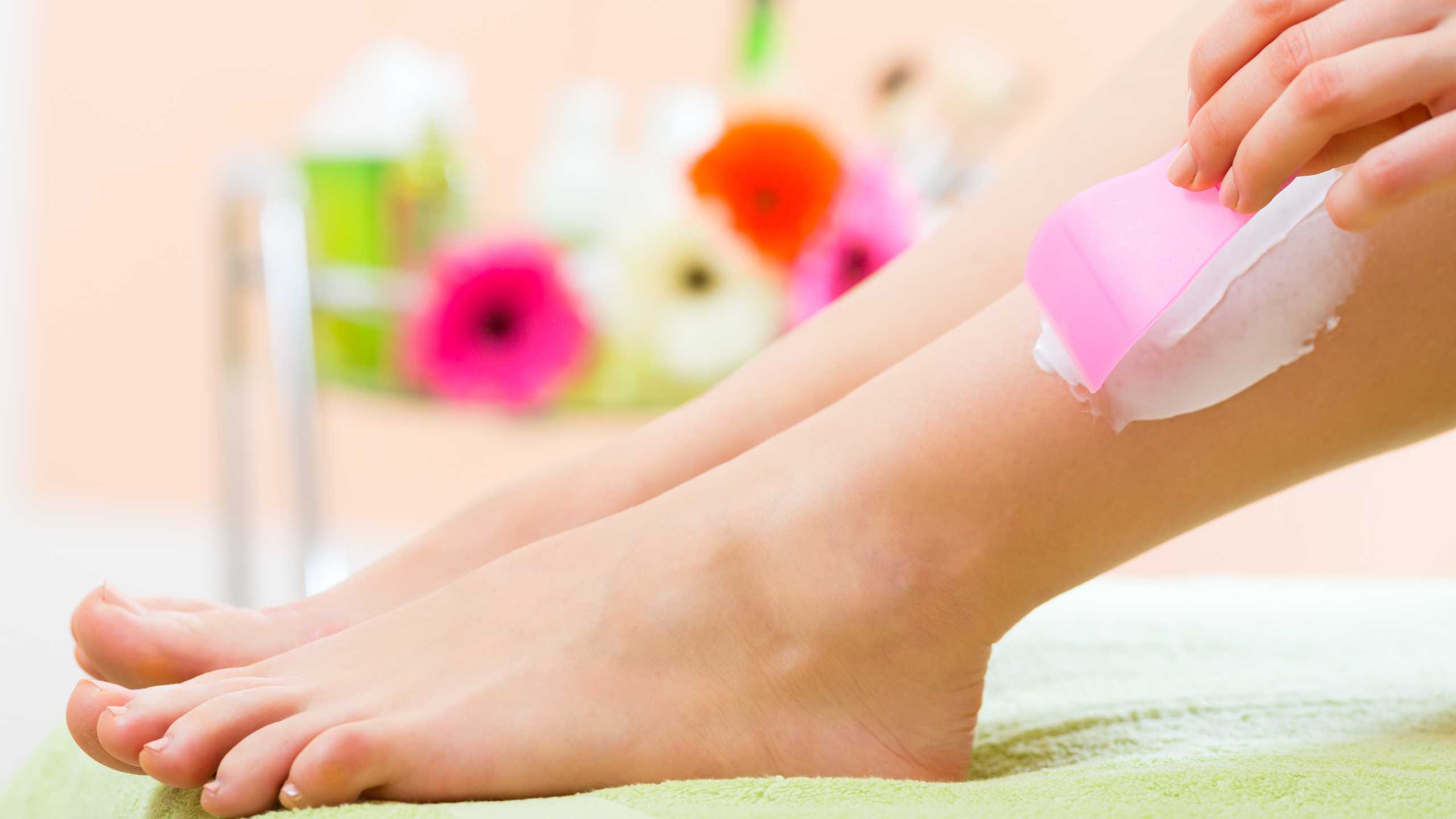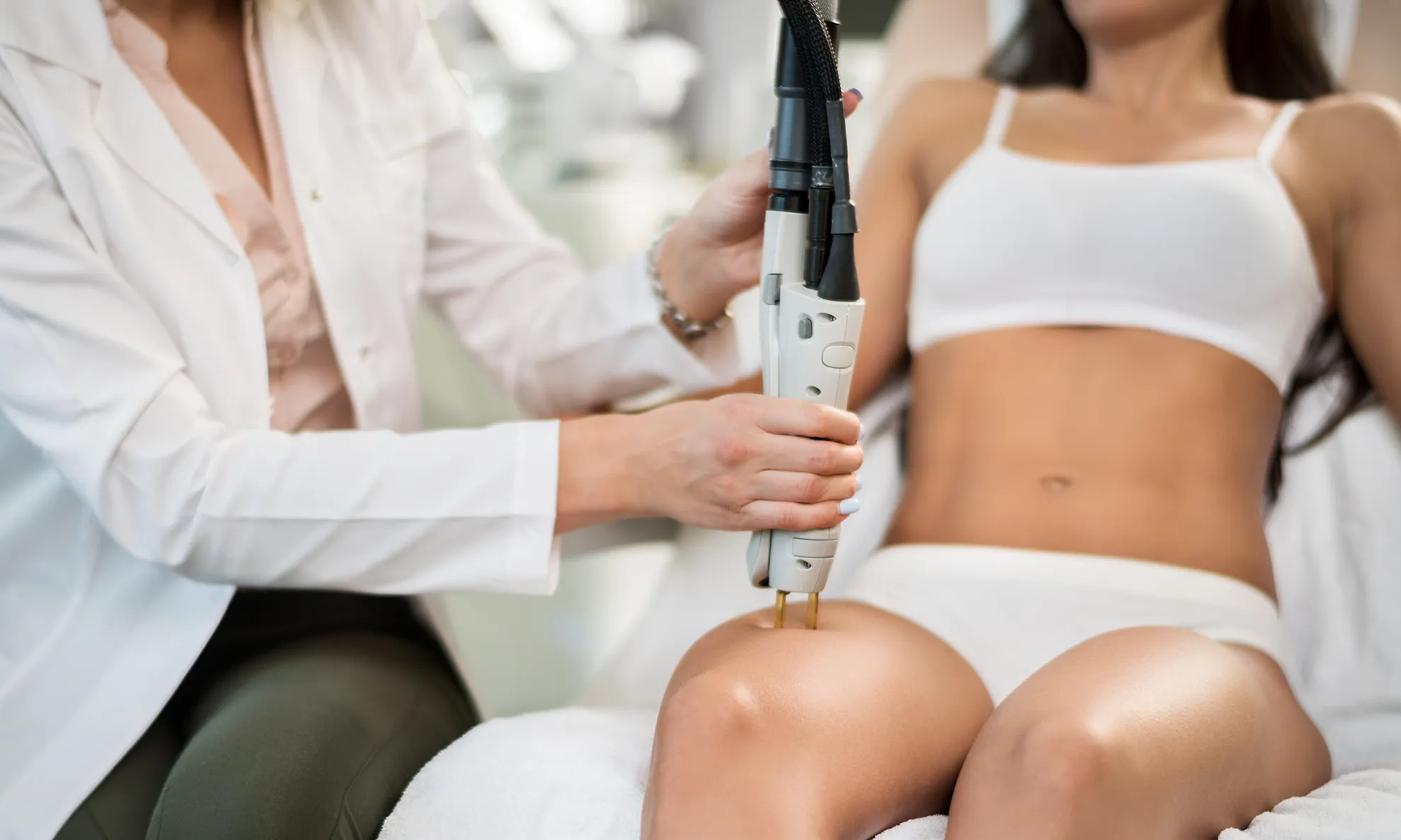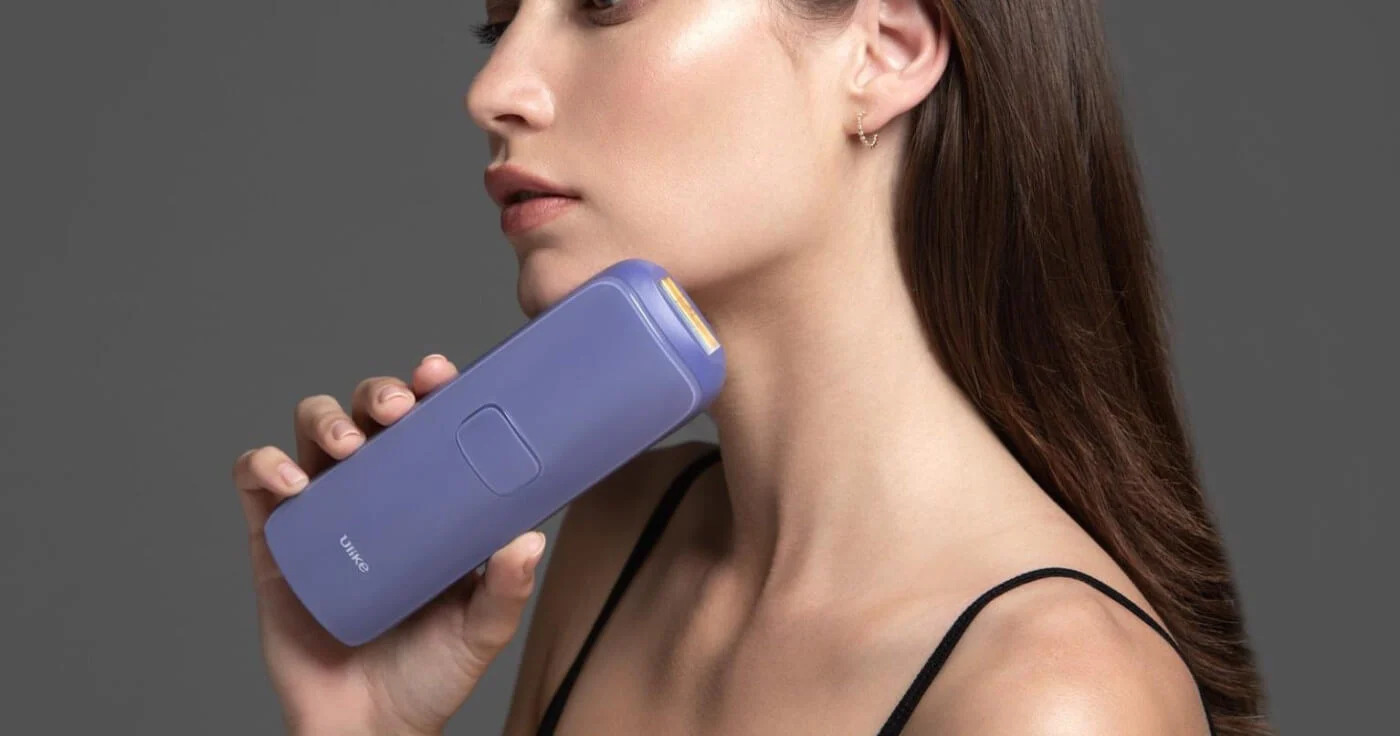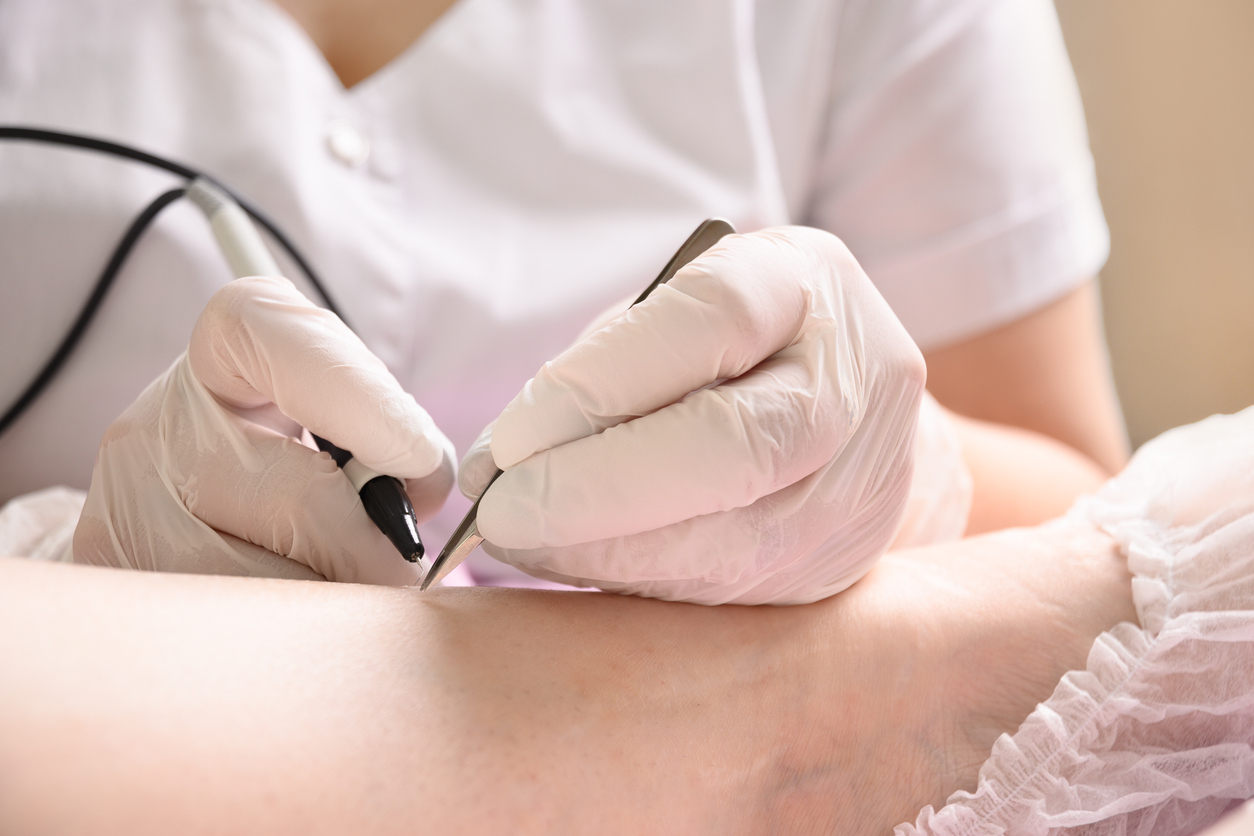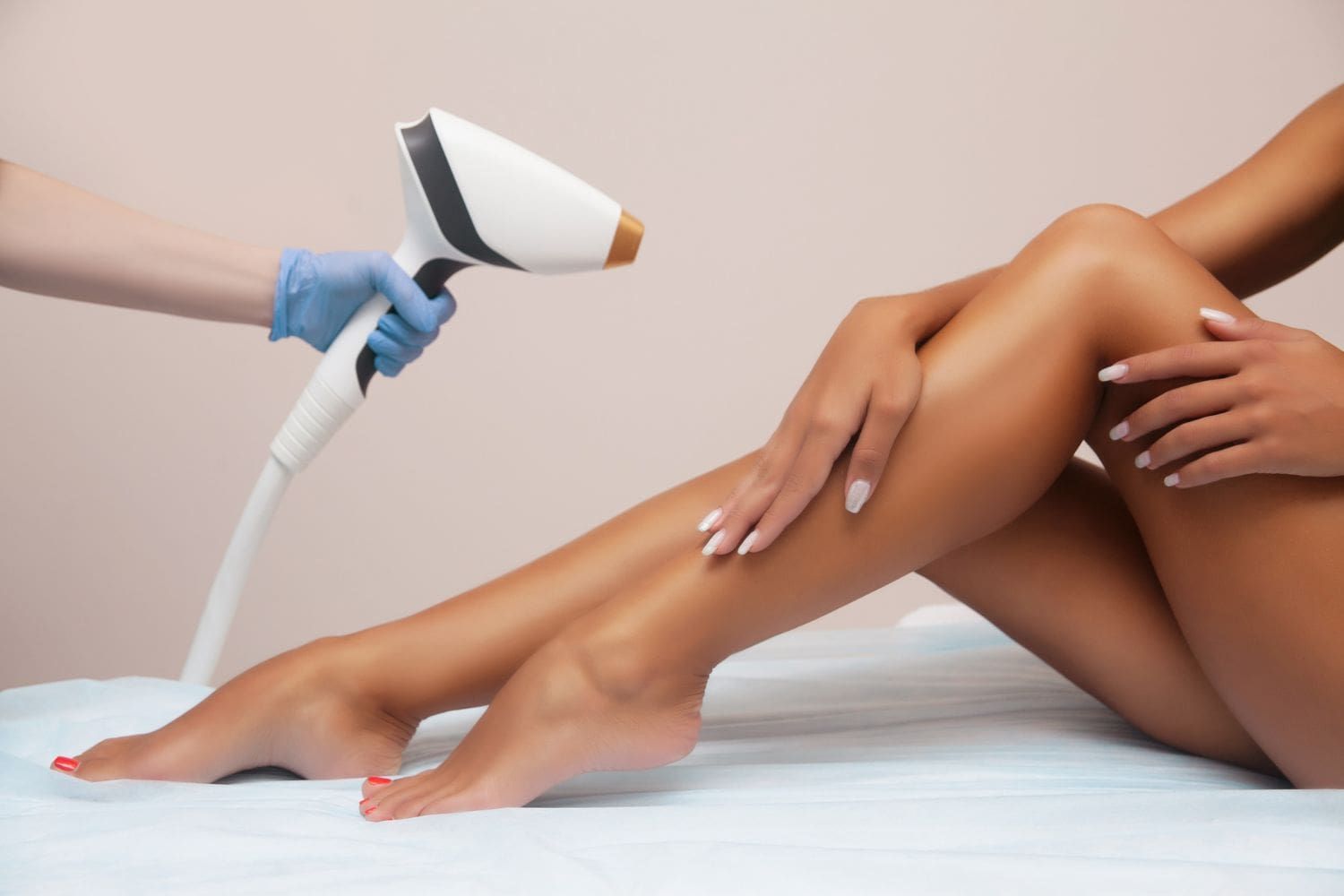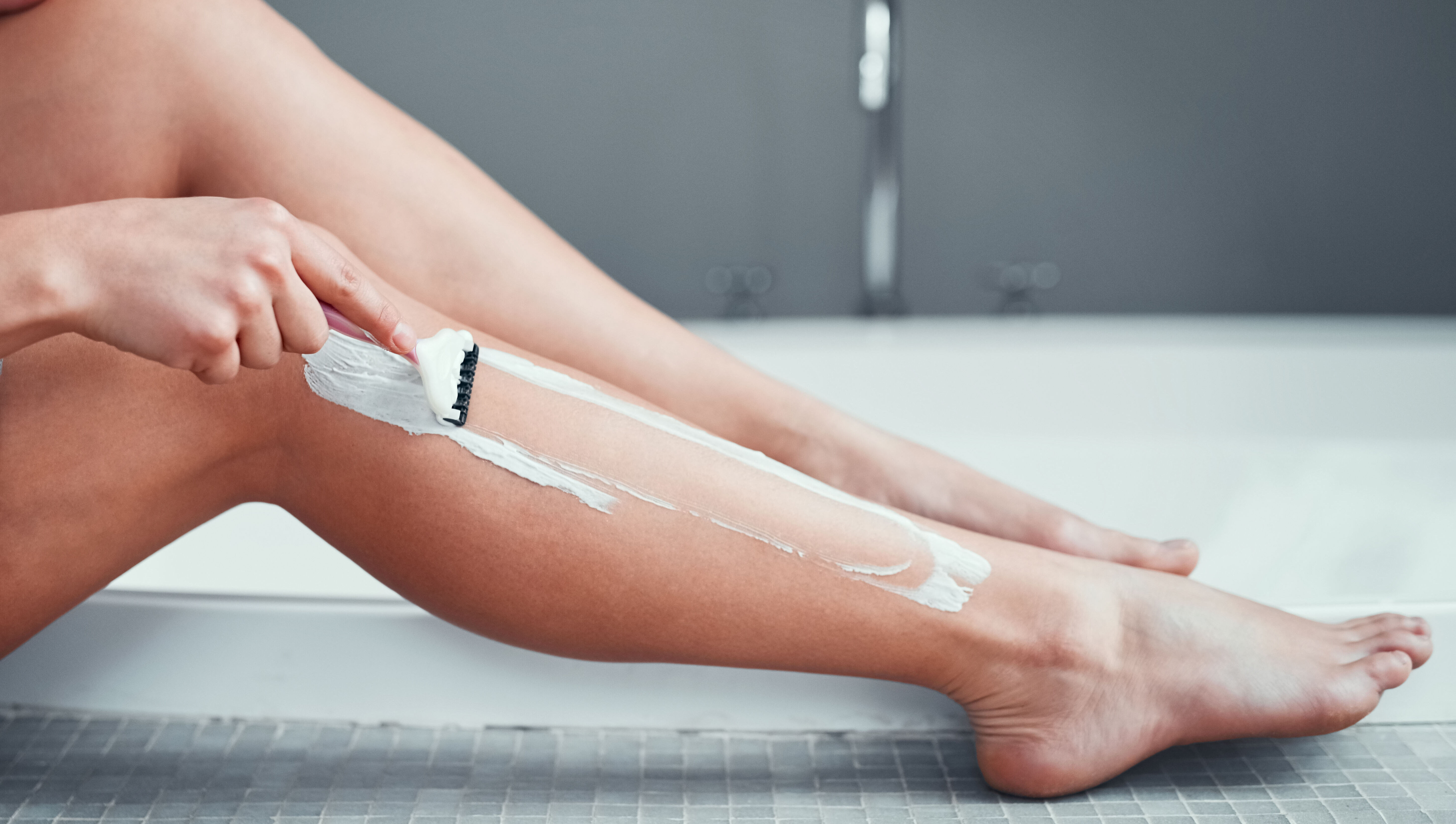Home>How-to Guides>For Women>How Does Ipl Hair Removal Work
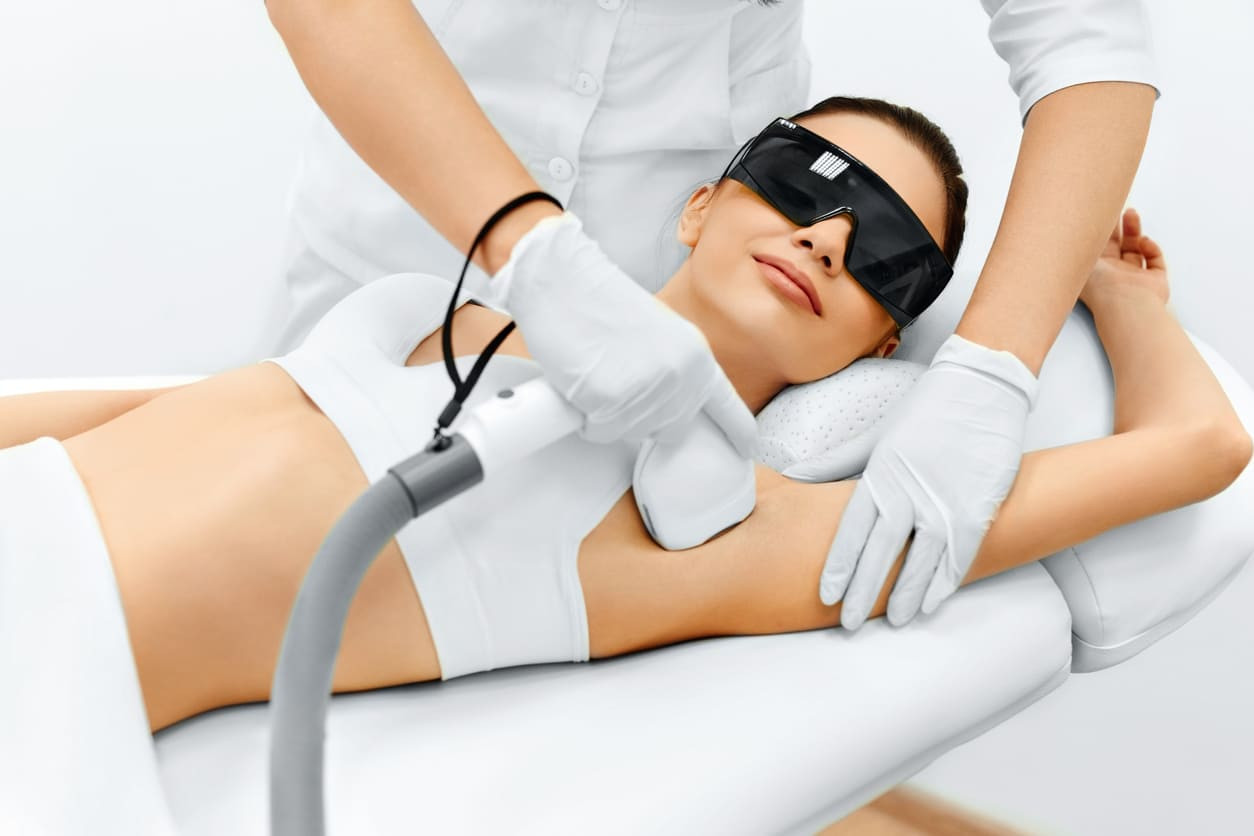

For Women
How Does Ipl Hair Removal Work
Modified: August 5, 2023
Learn how IPL hair removal works for women and achieve smooth, hair-free skin. Discover the science behind this effective and long-lasting method.
(Many of the links in this article redirect to a specific reviewed product. Your purchase of these products through affiliate links helps to generate commission for Under-tec.com, at no extra cost. Learn more)
Table of Contents
- Introduction
- What is IPL Hair Removal?
- How Does IPL Hair Removal Work?
- The Science Behind IPL Technology
- Benefits of IPL Hair Removal
- Preparing for IPL Hair Removal
- The IPL Hair Removal Process
- Aftercare for IPL Hair Removal
- Results and Effectiveness of IPL Hair Removal
- Safety Considerations and Possible Side Effects
- Comparison of IPL Hair Removal with Other Hair Removal Methods
- Conclusion
Introduction
Welcome to our comprehensive guide on IPL hair removal, a popular method for achieving long-lasting hair reduction. In this article, we will explore the ins and outs of IPL hair removal, from how it works to its benefits and safety considerations. Whether you’re new to IPL or considering it as an alternative to traditional hair removal methods, this guide will provide you with all the information you need to make an informed decision.
IPL, which stands for Intense Pulsed Light, has gained popularity as a convenient and effective solution for removing unwanted hair. Unlike traditional methods like shaving, waxing, or plucking, IPL targets the hair follicles beneath the skin’s surface, offering a more long-term solution. It is commonly used on areas such as the legs, arms, bikini line, face, and underarms.
To understand IPL hair removal better, it’s important to grasp how the technology works. IPL uses a broad-spectrum light that targets the melanin (pigment) in hair follicles, heating them and inhibiting hair growth. Over time, this repetitive process results in a significant reduction in hair growth, making it an appealing option for those seeking a smoother skin appearance.
Beyond its effectiveness, IPL hair removal offers several advantages. It is a versatile method that can be used on various skin types and hair colors. While it may take multiple sessions to achieve optimal results, IPL provides a longer-lasting solution compared to traditional hair removal methods. Additionally, it is a relatively painless procedure, with most individuals experiencing only minimal discomfort.
Before embarking on your IPL hair removal journey, it is essential to understand the preparation involved. This includes avoiding sun exposure, discontinuing certain hair removal methods, and conducting a patch test to assess your skin’s reaction to the IPL treatment. Adhering to these guidelines will help ensure a successful and safe experience.
Throughout this guide, we will dive into the specifics of the IPL hair removal process, including what to expect during and after treatment. We will also address key safety considerations and possible side effects, allowing you to make an informed decision about whether IPL is the right hair removal method for you. So, let’s begin exploring the world of IPL hair removal and unlock the secrets to smoother, hair-free skin!
What is IPL Hair Removal?
IPL hair removal is a popular method for achieving long-term hair reduction. IPL, which stands for Intense Pulsed Light, is a technology that uses a broad-spectrum light to target and disrupt the hair follicles. This process inhibits hair growth and results in smoother skin over time.
Unlike traditional hair removal methods like shaving or waxing, IPL offers a more permanent solution. While it may not completely eliminate hair growth, IPL significantly reduces hair regrowth and provides longer-lasting results. This makes it an attractive option for individuals looking to ditch the daily hair removal routine.
So, how does IPL hair removal work? The IPL device emits pulses of light that are absorbed by the pigment (melanin) in the hair follicles. The absorbed light is converted into heat, which damages the hair follicles and inhibits their ability to produce new hair. Over multiple treatment sessions, this disruption to the hair growth cycle leads to a noticeable reduction in hair density and thickness.
It’s important to note that IPL is most effective on individuals with fair to medium skin tones and dark hair. This is because the contrast between the skin and hair color allows the light to be more effectively absorbed by the hair follicles, increasing the treatment’s efficacy. However, advancements in IPL technology have made it suitable for a wider range of skin tones and hair colors.
One of the advantages of IPL hair removal is its versatility. IPL can be used on various body areas, including the legs, arms, bikini line, face, and underarms. It can effectively target large areas, making it a time-efficient option for removing unwanted hair. However, it is not recommended for use on sensitive areas, such as the eyebrows or genitals.
It’s important to keep in mind that IPL is not a one-time solution. Achieving desired results typically requires multiple treatment sessions spread out over several weeks or months. This is because the hair growth cycle varies, and IPL is most effective during the active growth phase. The number of sessions needed will depend on individual factors such as hair color, skin type, and the treatment area.
In the next sections, we will explore the science behind IPL technology, the benefits it offers, and how to prepare for an IPL hair removal treatment. Stay tuned to uncover all the details about this innovative hair removal method!
How Does IPL Hair Removal Work?
IPL hair removal utilizes advanced technology to target and inhibit hair growth. The process involves the use of intense pulsed light, which is absorbed by the hair follicles, leading to their destruction and delayed regrowth.
In simple terms, IPL works by delivering pulses of light to the skin’s surface. The light is then absorbed by the pigment (melanin) within the hair follicles, converting it into heat. The heat damages the cells responsible for hair growth, known as the hair matrix cells, which ultimately inhibits their ability to produce hair.
It’s important to note that IPL only affects hair follicles in the active growth phase, called the anagen phase. Hair follicles go through multiple phases, including the anagen (growth), catagen (transitional), and telogen (resting) phases. Since hair follicles are in different phases at any given time, multiple IPL treatments are necessary to treat all active follicles.
To effectively remove hair, IPL devices emit a range of wavelengths, allowing them to target a wide spectrum of hair colors. However, IPL is most effective on darker hair colors because the melanin absorbs a higher percentage of light energy. Light hair colors, such as gray or blonde, may not have sufficient melanin to absorb the light energy effectively, making IPL less effective in these cases.
While IPL targets the hair follicles, it is important to protect the surrounding skin. IPL devices have built-in cooling systems or use cooled gel applied to the treatment area to prevent overheating of the skin. This ensures that the light energy is directed solely towards the hair follicles.
The duration and frequency of IPL treatments vary depending on individual factors such as hair type, skin color, and the treated area. Typically, a series of treatments is required, spaced several weeks apart, to catch different hair growth cycles and achieve optimum results. Most individuals will notice hair reduction after a few treatments, with optimal results seen after completing the recommended sessions.
It’s worth noting that while IPL hair removal can result in long-term hair reduction, it may not provide permanent hair removal. Some individuals may experience hair regrowth over time, which can be managed with occasional maintenance treatments.
In the following sections, we will delve into the scientific principles behind IPL technology and explore the benefits it offers as a hair removal method. Stay tuned to uncover more about this innovative and effective approach to achieving smoother, hair-free skin!
The Science Behind IPL Technology
IPL, or Intense Pulsed Light, is a technology that harnesses the power of light to effectively target and inhibit hair growth. Understanding the science behind IPL can provide insights into why it is such a popular choice for long-term hair reduction.
At its core, IPL technology utilizes a broad spectrum of light wavelengths that penetrate the skin and specifically target the melanin (pigment) present in the hair follicles. The melanin absorbs the light energy, which is then converted into heat. This heat damages the cells responsible for hair growth, known as the hair matrix cells, reducing their ability to produce hair.
The success of IPL hair removal lies in its ability to selectively target the hair follicles while leaving the surrounding skin unharmed. This is possible due to the difference in absorption of light energy between the melanin in the hair follicles and the other components of the skin, such as collagen and hemoglobin.
Each IPL device emits a range of light wavelengths, typically between 500 to 1200 nanometers. The selection of these wavelengths is crucial, as it determines the depth at which the light energy is absorbed. For hair removal purposes, IPL devices are calibrated to primarily target melanin within the hair follicles.
During an IPL treatment, the handpiece of the device is pressed against the skin, and pulses of light are emitted onto the treatment area. This light energy is absorbed by the melanin in the hair follicles, leading to heating and subsequent destruction of the hair matrix cells. Over time, this process disrupts the hair growth cycle, resulting in a significant reduction in hair regrowth.
It’s important to note that the effectiveness of IPL treatment depends on the contrast between the hair color and the surrounding skin. IPL is most effective when used on individuals with fair to medium skin tones and dark hair. The greater the contrast, the more light energy is absorbed by the hair follicles, leading to better results.
Advancements in IPL technology have made it possible for a wider range of skin tones and hair colors to benefit from IPL hair removal. Some devices have adjustable settings to cater to different skin and hair types. However, it is recommended to consult with a professional or dermatologist to determine the suitability of IPL for your specific needs.
While IPL technology has been primarily associated with hair removal, it can also target other skin concerns, such as pigmentation irregularities, vascular lesions, and even stimulate collagen production. This versatility has contributed to the popularity of IPL devices in dermatology clinics and medspas.
Understanding the science behind IPL technology helps to demystify its effectiveness as a hair removal method. In the next section, we will explore the benefits of IPL hair removal and why it is often preferred over traditional hair removal techniques. So, let’s continue our journey in uncovering the secrets of IPL hair removal!
Benefits of IPL Hair Removal
IPL hair removal offers several benefits that make it a popular choice for individuals seeking a long-term solution to unwanted hair. From its effectiveness to its versatility, IPL provides advantages over traditional hair removal methods.
One of the main benefits of IPL hair removal is its effectiveness in reducing hair growth. While it may not result in permanent hair removal, IPL treatments can lead to a significant reduction in hair density and thickness. This means fewer visible hairs and longer intervals between the need for maintenance treatments, providing convenience and time savings.
IPL is a versatile hair removal method that can be used on various body areas, including the legs, arms, bikini line, face, and underarms. It can effectively target large treatment areas due to its broad-spectrum light technology, making it a time-efficient option compared to traditional methods like waxing or plucking, which can be time-consuming and tedious.
Compared to other hair removal methods, IPL is generally considered a relatively painless option. While individuals may experience a mild sensation during treatment, such as a slight tingling or snapping feeling, it is typically well-tolerated. This makes IPL suitable for those who have a low pain threshold or are looking for a more comfortable hair removal procedure.
Another advantage of IPL is its suitability for a wide range of skin tones and hair colors. While it is most effective on individuals with fair to medium skin tones and dark hair, advancements in technology have made IPL accessible to a broader audience. It is important to consult with a professional to ensure the device used is appropriate for your specific skin and hair type.
Unlike traditional methods like shaving or waxing, which only provide temporary results, IPL offers more long-term hair reduction. By targeting the hair follicles beneath the skin’s surface, IPL disrupts the hair growth cycle, leading to a gradual and noticeable decrease in hair regrowth over time. This allows individuals to enjoy smoother, hair-free skin for longer periods.
Moreover, IPL treatments are relatively quick, providing a convenient option for those with busy schedules. The duration of each session depends on the size of the treatment area, with smaller areas like the upper lip taking only a few minutes, while larger areas like the legs may require more time.
It’s worth mentioning that IPL hair removal is considered a non-invasive procedure, meaning it does not require any incisions or injections. The treatment is performed on the skin’s surface, minimizing the risk of complications and offering a safer alternative to invasive hair removal techniques.
Overall, IPL hair removal stands out as a viable hair reduction option for individuals seeking longer-lasting results and convenience. Its effectiveness, versatility, reduced pain, and wider accessibility contribute to its popularity as a preferred choice in the world of hair removal.
Next, we will dive into the details of preparing for an IPL hair removal treatment, ensuring you have all the information necessary for a successful and satisfying experience.
Preparing for IPL Hair Removal
Proper preparation is key to ensuring a successful IPL hair removal treatment. Taking the necessary steps before your session helps maximize the effectiveness of the treatment and reduces the risk of potential side effects. Here are some essential tips to help you prepare for your IPL hair removal appointment.
One crucial step in preparing for IPL hair removal is avoiding sun exposure. It is recommended to stay out of direct sunlight and avoid tanning beds for at least four to six weeks leading up to your treatment. Excessive sun exposure can make your skin more sensitive to the IPL light and increase the risk of adverse reactions, such as burns or hyperpigmentation.
It’s also important to discontinue any hair removal methods that can disturb the hair follicles, such as waxing or tweezing. These methods remove the hair from the root, which is necessary for IPL to effectively target the hair follicles. Shaving, on the other hand, is a suitable hair removal method prior to IPL, as it only trims the hair above the skin’s surface and does not interfere with the hair follicles.
Prior to your IPL treatment, it is recommended to have a consultation with a licensed professional. This allows for a thorough examination of your skin and hair type to determine the appropriate IPL settings for your specific needs. The professional can also address any questions or concerns you may have about the treatment process and expected results.
If you have any medical conditions or are taking medications that may affect your response to IPL treatment, it’s important to disclose this information during the consultation. Certain conditions and medications can make your skin more sensitive, which may require adjustments to the IPL settings or even contraindicate the treatment.
Before your first IPL session, your provider may recommend a patch test to assess your skin’s reaction to the treatment. This involves applying the IPL light to a small area of skin and monitoring the response. It helps determine the appropriate settings for your skin and ensures your safety during the full treatment.
During the consultation or patch test, your provider will discuss the recommended number of IPL sessions for optimal results. Multiple treatments are usually required to target all hair follicles in different growth phases. Following the recommended treatment schedule increases the chances of achieving desired hair reduction and helps maintain long-lasting results.
Lastly, it’s important to follow any specific instructions provided by your provider regarding skincare products or cosmetic procedures before and after IPL treatment. Some products or treatments, such as chemical peels or exfoliating scrubs, may need to be avoided for a certain period before or after IPL to minimize the risk of skin irritation.
By following these preparation tips, you can ensure that your skin is in the best condition for IPL hair removal and that you are well-prepared for the treatment process. In the next section, we will explore what to expect during an IPL hair removal session, so you can feel confident and informed before your appointment.
The IPL Hair Removal Process
The IPL hair removal process involves a series of steps to effectively target and inhibit hair growth. Understanding what to expect during an IPL session can help you feel more prepared and confident in the treatment process.
Before the IPL treatment begins, you will be asked to wear protective eyewear to shield your eyes from the bright light emitted by the IPL device. Your provider may also apply a cooling gel to the treatment area to enhance comfort and maximize the effectiveness of the treatment.
Once you are ready, the IPL handpiece will be pressed against your skin, and pulses of light will be emitted onto the treatment area. The duration of each pulse is usually very short, typically a fraction of a second. You may feel a slight tingling or snapping sensation on your skin as the light energy is delivered, but this is generally well-tolerated by most individuals.
The IPL device is equipped with a cooling mechanism to keep the skin’s surface temperature regulated and minimize any discomfort. This cooling feature also helps protect your skin from potential heat-related side effects during the treatment.
During the session, the IPL device will be moved systematically across the treatment area, targeting each desired spot. The number of pulses delivered and the duration of the treatment will depend on factors such as the size of the area being treated and the density of the hair.
It’s important to note that IPL treatments are customized based on individual factors such as skin type, hair color, and hair thickness. The settings of the IPL device will be adjusted according to these factors to optimize the treatment and achieve the best possible results.
After the IPL treatment, a soothing cream or gel may be applied to the treated area to alleviate any temporary skin redness or irritation. You will be provided with aftercare instructions, which may include recommendations for skincare products, sun protection, or avoiding certain activities that could irritate the treated area.
It’s essential to follow these post-treatment instructions to ensure proper healing and minimize the risk of adverse reactions. The treated hair follicles may appear slightly darker or stubbly immediately after the session, but this is a normal response and will fade over time.
It’s important to note that results from IPL hair removal are not immediate. The treated hair follicles will gradually shed in the weeks following the treatment, leading to a reduction in hair regrowth. Multiple sessions are usually required to target all hair follicles in different growth cycles and achieve the desired long-term hair reduction.
The interval between IPL sessions will depend on various factors, such as the body area being treated, your hair growth cycle, and the specific recommendation of your provider. Typically, treatments are spaced several weeks apart to allow for proper healing and to catch different hair follicles in their active growth phase.
By following the IPL hair removal process and attending all the recommended sessions, you have the best chance of achieving long-lasting hair reduction and enjoying smoother, hair-free skin. In the next section, we will explore the aftercare necessary following an IPL treatment to maintain your results and ensure optimal skin health.
Aftercare for IPL Hair Removal
Proper aftercare following an IPL hair removal treatment is crucial for ensuring optimal results and minimizing the risk of potential side effects. By following these post-treatment guidelines, you can help maintain the health of your skin and prolong the benefits of IPL.
Immediately after your IPL session, it is normal to experience some mild redness and slight swelling in the treated area. This is a temporary response and should resolve within a few hours or days. Applying a cool compress or using an over-the-counter cortisone cream can help ease any discomfort or inflammation.
Avoid exposing the treated area to direct sunlight for at least 48 to 72 hours after your IPL treatment. The skin may be more sensitive to sunlight following the procedure, and sun exposure can increase the risk of hyperpigmentation or other unwanted side effects. If you need to go out in the sun, wear protective clothing and apply a broad-spectrum sunscreen with a high SPF to the treated area.
It’s important to avoid using any harsh skincare products, such as exfoliants or acids, on the treated area for a week or two after the treatment. These products can further irritate the skin or interfere with the healing process. Stick to gentle cleansers and moisturizers during this time.
Avoid picking, scratching, or rubbing the treated area to prevent any potential peeling or scabbing. Let the skin heal naturally, and if necessary, apply a soothing cream or ointment recommended by your provider.
If you experience any discomfort or notice any unusual side effects, such as severe pain, blistering, or skin discoloration, contact your provider immediately. While these reactions are rare, it’s essential to seek professional guidance for proper assessment and appropriate management.
As the treated hair follicles start to shed, you may notice stubble or darkened hair in the treated area. This is a normal part of the hair growth cycle and will resolve over time. It’s important to avoid removing these hairs by waxing, plucking, or tweezing. Instead, you may gently shave the area if desired.
In between your IPL sessions, it’s crucial to protect your skin from sun exposure by regularly applying sunscreen, even if you are not planning on being outdoors for an extended period. This helps maintain the health of your skin and prevents any potential darkening or hyperpigmentation of the treated area.
To maintain the long-term results of IPL hair removal, it is usually recommended to schedule maintenance treatments as needed. The frequency of maintenance sessions may vary depending on individual factors such as hair regrowth rate and personal preference. Consult with your provider to determine the appropriate timing for maintenance treatments.
By following these aftercare guidelines, you can ensure proper healing, minimize the risk of complications, and prolong the benefits of IPL hair removal. Stay committed to your treatment plan and establish a good skincare routine to keep your skin healthy and smooth.
In the next section, we will explore the results and effectiveness of IPL hair removal, helping you understand what to expect in terms of hair reduction and the duration of the effects.
Results and Effectiveness of IPL Hair Removal
When it comes to the results and effectiveness of IPL hair removal, it’s important to have a realistic understanding of what this method can achieve. IPL has been proven to provide significant hair reduction, but it may not completely eliminate hair growth permanently.
The effectiveness of IPL hair removal varies from person to person, depending on various factors such as the individual’s skin type, hair color, and the specific IPL device used. IPL is most effective on individuals with fair to medium skin tones and dark hair. The contrast between the skin and hair color allows the IPL light to be absorbed more efficiently by the hair follicles, leading to better hair reduction results.
Studies have shown that IPL can lead to a noticeable reduction in hair density and thickness. With each treatment session, a portion of the hair follicles in the active growth phase (anagen) is targeted and inhibited, resulting in a gradual decrease in hair growth over time. This reduction in hair regrowth can provide individuals with smoother skin and longer intervals between maintenance treatments.
It’s important to note that multiple IPL sessions are typically required to achieve optimal results. The number of treatments necessary varies depending on factors such as the treatment area, the density of the hair, and individual response to the treatment. Most individuals will need a series of sessions spaced several weeks apart to catch different hair growth cycles and target all active follicles.
While IPL offers long-term hair reduction, it is not considered a permanent hair removal method. Some hair regrowth may occur over time, which can be managed with occasional maintenance treatments. The frequency of maintenance sessions varies by individual and can range from several months to a year or more.
It’s important to have realistic expectations when undergoing IPL hair removal. While it can significantly reduce hair growth, complete hair removal or permanent results may not be achievable for everyone. However, IPL offers a convenient and effective alternative to traditional hair removal methods, providing individuals with smoother skin and fewer hair-related concerns.
It’s worth mentioning that individual responses to IPL treatment can vary. Some individuals may experience more significant hair reduction, while others may see more modest results. Factors such as hormonal changes, underlying medical conditions, and potential hair growth triggers can influence the efficacy of IPL hair removal.
Regular and consistent adherence to the recommended treatment plan, as well as proper maintenance, can help optimize the results of IPL hair removal. Following aftercare guidelines, utilizing sun protection, and staying in touch with your provider for guidance and touch-up treatments can contribute to prolonging the benefits of IPL.
Be sure to consult with a licensed professional before undergoing IPL hair removal to discuss your specific goals, assess the suitability of IPL for your skin and hair type, and receive personalized recommendations.
In the final section of this guide, we will compare IPL hair removal with other common hair removal methods, allowing you to make an informed decision regarding the best approach for your hair removal needs.
Safety Considerations and Possible Side Effects
While IPL hair removal is generally considered safe, it is important to be aware of certain safety considerations and possible side effects associated with the treatment. Understanding these factors can help you make an informed decision and ensure a safe and successful IPL hair removal experience.
One of the primary safety considerations for IPL hair removal is the potential for adverse reactions, particularly in individuals with certain skin types or medical conditions. IPL works by targeting the melanin in the hair follicles, and individuals with darker skin tones or a higher concentration of melanin may be at a higher risk of complications, such as burns or hyperpigmentation. It is important to consult with a licensed professional who can assess your skin type and determine the most suitable treatment parameters for your specific needs.
There is also a risk of experiencing temporary side effects after an IPL hair removal treatment. These side effects may include redness, swelling, itching, or mild discomfort in the treated area. These reactions are typically mild and subside within a few hours or days. Applying a cool compress or topical creams recommended by your provider can help alleviate any discomfort or inflammation.
In rare cases, more severe side effects can occur, such as blistering, scarring, or changes in skin texture. These side effects are more likely to occur if the treatment is not performed correctly or if aftercare instructions are not followed diligently. To minimize the risk of complications, it is vital to choose a reputable provider with experience in performing IPL hair removal treatments and to strictly adhere to the prescribed aftercare regimen.
Sensitivity to sunlight may temporarily increase after an IPL treatment, making your skin more susceptible to sunburn or sun damage. It is crucial to protect the treated area from direct sunlight for at least 48 to 72 hours following the treatment. This can be done by wearing protective clothing and applying a broad-spectrum sunscreen with a high SPF.
Pregnant women are generally advised to avoid undergoing IPL hair removal due to the lack of research on its effects during pregnancy. It is recommended to consult a healthcare professional before considering IPL treatment if you are pregnant or planning to become pregnant.
It’s also important to note that the effectiveness of IPL may vary among individuals, and not everyone will experience the same level of hair reduction or long-term results. Factors such as hair color, hair thickness, hormonal changes, and underlying medical conditions can impact treatment efficacy.
Prior to your IPL treatment, be sure to disclose any medical conditions, medications, or other treatments you are currently undergoing to your provider. Certain medications, such as photosensitizing drugs or topical creams, can increase the risk of adverse reactions to IPL. Your provider will advise you on whether IPL hair removal is suitable for you and make any necessary adjustments to the treatment plan.
In summary, IPL hair removal is generally safe when performed by a trained professional. However, it is essential to consider potential risks and side effects and adhere to the recommended safety precautions and aftercare instructions. By doing so, you can minimize the risk of complications and enjoy the benefits of IPL hair removal with confidence.
In the final section of this guide, we will compare IPL hair removal with other common hair removal methods, helping you choose the best approach for your specific needs and preferences.
Comparison of IPL Hair Removal with Other Hair Removal Methods
When it comes to choosing a hair removal method, several options are available, each with its pros and cons. Let’s compare IPL hair removal with other common hair removal methods to help you make an informed decision based on your needs, preferences, and desired results.
Shaving is one of the most accessible and convenient methods for removing unwanted hair. It involves using a razor to cut the hair at the skin’s surface. Shaving provides instant results and is relatively painless. However, the effects are temporary, and hair regrowth occurs quickly, usually within a few days. Additionally, shaving can result in stubble and potentially irritate the skin, leading to issues such as razor bumps or ingrown hairs.
Waxing involves applying hot or cold wax to the skin, letting it harden, and then removing it along with the hair. Waxing provides longer-lasting results compared to shaving, as it removes hair from the root. However, it can be quite painful, and the process may cause skin irritation, redness, or ingrown hairs. Waxing also requires a certain length of hair for successful removal, which means allowing the hair to grow out between treatments.
Depilatory creams or lotions are chemical-based products that dissolve the hair at the skin’s surface. These products work quickly and are relatively painless. However, they can have a strong smell and may cause skin irritation or allergic reactions in some individuals. Hair regrowth with depilatory creams tends to be faster than with other methods, typically within a few days.
Electrolysis is a hair removal method that targets individual hair follicles using a small electric current. It is commonly used for smaller areas like the eyebrows or upper lip. Electrolysis is considered a permanent hair removal solution, as it destroys the hair follicles. However, it can be time-consuming and may require multiple sessions to treat all hair follicles. Electrolysis can also cause discomfort or temporary skin reactions.
Laser hair removal is a popular choice for long-term hair reduction. It uses a laser beam to target and damage the hair follicles. Like IPL, laser hair removal is effective in reducing hair growth, but it can be more expensive than other methods. It typically requires multiple sessions for optimal results and may cause temporary redness, swelling, or pigmentation changes in the treated area.
When comparing IPL hair removal to these other methods, several factors stand out. IPL offers a less painful experience compared to methods like waxing or electrolysis. It provides longer-lasting results compared to shaving or depilatory creams. IPL treatment is versatile and can be used on various body areas. It is most effective on fair to medium skin tones and dark hair, but advancements have made it suitable for a wider range of skin tones and hair colors.
However, it’s important to note that IPL may not be suitable for everyone, especially those with certain medical conditions or darker skin tones. Consulting with a licensed professional is crucial for assessing your eligibility for IPL and determining the best course of action for your hair removal needs.
In summary, IPL hair removal offers a blend of convenience, effectiveness, and longer-lasting results compared to many traditional hair removal methods. It provides an option for individuals seeking a more permanent reduction in hair growth without the high costs associated with other professional treatments. By understanding the pros and cons of each method, you can make an informed decision about the best hair removal approach for you.
Now that you have a comprehensive understanding of IPL hair removal and its comparison to other methods, you can confidently choose the most suitable solution for achieving smoother, hair-free skin.
Conclusion
In conclusion, IPL hair removal offers a convenient and effective solution for achieving long-term hair reduction. By utilizing the power of Intense Pulsed Light technology, IPL targets and inhibits the hair follicles, leading to smoother skin and reduced hair growth over time.
Throughout this guide, we explored various aspects of IPL hair removal, including what it is, how it works, its benefits, and safety considerations. We discussed the science behind IPL technology and its ability to selectively target melanin in the hair follicles while leaving the surrounding skin unharmed. We also delved into the preparation needed before an IPL treatment, the process itself, and the aftercare necessary for optimal healing and results.
IPL hair removal provides several advantages compared to traditional hair removal methods. It offers longer-lasting results, reduces the need for constant maintenance, and provides versatility by targeting various body areas. IPL is relatively painless, making it a comfortable option for individuals with low pain tolerance. It is also suitable for a wide range of skin tones and hair colors.
While IPL hair removal is generally safe, it’s important to consider potential side effects and adhere to safety precautions. Consulting with a licensed professional, following aftercare instructions, and protecting the skin from sun exposure are essential in ensuring a successful treatment experience.
When compared to other hair removal methods, such as shaving, waxing, depilatory creams, electrolysis, and laser hair removal, IPL stands out for its combination of convenience, effectiveness, and longer-lasting results.
In the end, the choice of hair removal method depends on individual preferences, needs, and factors such as skin tone, hair color, and budget. It is recommended to consult with a licensed professional or dermatologist to determine the most suitable option for your specific circumstances.
We hope this guide has provided you with valuable insights into IPL hair removal. Armed with this knowledge, you are now equipped to make an informed decision and embark on your journey to achieving smoother, hair-free skin.
